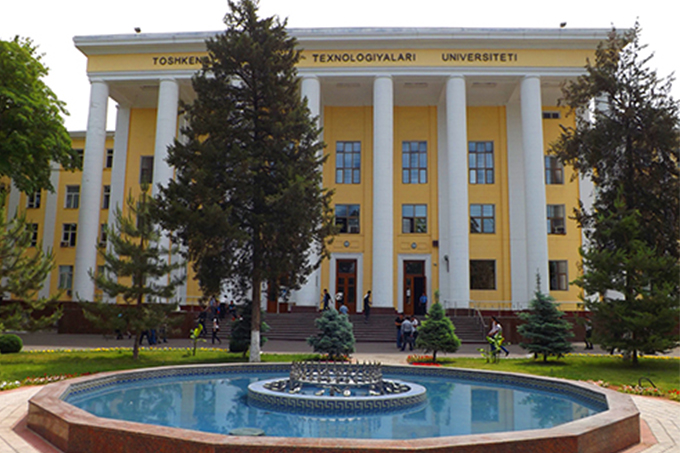Tadqiqotga oid habarlar Xabarlar
Habarlar
Tadqiqotga oid habarlar
Xabarlar
Research Highlights

A sustained high-temperature fusion plasma regime facilitated by fast ions
Prof. Yong-Su Na
Nuclear fusion is one of the most attractive alternatives to
carbon-dependent energy sources1. Harnessing energy from nuclear fusion
in a large reactor scale, however, still presents many scientific
challenges despite the many years of research and steady advances in
magnetic confinement approaches.
Research Highlights Board

Engineering DNA-based synthetic condensates
with programmable material properties, compositions, and...
Prof. YONGDAE SHIN & DO-NYUN KIM
Biomolecular condensates participate in
diverse cellular processes, ranging from gene regulation to
stress survival. Bottom-up engineering of synthetic
condensates advances our understanding of the organizing
principle of condensates

Association between antibiotics and dementia
risk: A retrospective cohort study
Prof. Sang Min Park
The possible relation between antibiotic
exposure and the alteration of gut microbiota, which may
affect dementia risk, has been revealed. However, the
association between antibiotics and dementia incidence has
rarely been studied.

Widespread false gene gains caused by
duplication errors in genome assemblies
Prof. Heebal Kim
False duplications in genome assemblies
lead to false biological conclusions. We quantified false
duplications in popularly used previous genome assemblies
for platypus, zebra finch, and Anna’s Hummingbird, and their
new counterparts of the same species generated by the
Vertebrate Genomes Project, of which the Vertebrate Genomes
Project pipeline attempted to eliminate false duplications
through haplotype phasing and purging.

Biomimetic reconstruction of butterfly wing
scale nanostructures for radiative cooling and structura...
Prof. Seung Hwan Ko
A great number of butterfly species in the
warmer climate have evolved to exhibit fascinating optical
properties on their wing scales which can both regulate the
wing temperature and exhibit structural coloring in order to
increase their chances of survival.

Orthogonally-tunable and ER-targeting
fluorophores detect avian influenza virus early infection
Prof. Dongwhan Lee
Cell-based assays can monitor virus
infection at a single-cell level with high sensitivity and
cost-efficiency. For this purpose, it is crucial to develop
molecular probes that respond selectively to physiological
changes in live cells.

Motivational salience drives habitual gazes
during value memory retention and facilitates relearning...
Prof. Hyoung Kim
A habitual gaze is critical to efficiently
identify and exploit valuable objects. However, it is
unclear what salience components drive the habitual gaze
choice. Here, we trained subjects to assign positive,
neutral, and negative values to objects and found that
motivational salience guided habitual gaze choices over 30
days of memory retention.

SAIGE-GENE+ improves the efficiency and
accuracy of set-based rare variant association tests
Prof. Seunggeun Lee
Several biobanks, including UK Biobank
(UKBB), are generating large-scale sequencing data. An
existing method, SAIGE-GENE, performs well when testing
variants with minor allele frequency (MAF) ≤ 1%, but
inflation is observed in variance component set-based tests
when restricting to variants with MAF ≤ 0.1% or 0.01%.

Reduced dopant-induced scattering in remote
charge–transfer-doped MoS2 field-effect transistors
Prof. Takhee Lee
Efficient doping for modulating electrical
properties of two-dimensional (2D) transition metal
dichalcogenide (TMDC) semiconductors is essential for
meeting the versatile requirements for future electronic and
optoelectronic devices.

Genome-wide association analyses of physical
activity and sedentary behavior provide insights into u...
Prof. Taesung Park
Although physical activity and sedentary
behavior are moderately heritable, little is known about the
mechanisms that influence these traits.

Motivational salience drives habitual gazes
during value memory retention and facilitates relearning...
Prof. Hyoung Kim
A habitual gaze is critical to efficiently
identify and exploit valuable objects. However, it is
unclear what salience components drive the habitual gaze
choice. Here, we trained subjects to assign positive,
neutral, and negative values to objects and found that
motivational salience guided habitual gaze choices over 30
days of memory retention.

SAIGE-GENE+ improves the efficiency and
accuracy of set-based rare variant association tests
Prof. Seunggeun Lee
Several biobanks, including UK Biobank
(UKBB), are generating large-scale sequencing data. An
existing method, SAIGE-GENE, performs well when testing
variants with minor allele frequency (MAF) ≤ 1%, but
inflation is observed in variance component set-based tests
when restricting to variants with MAF ≤ 0.1% or 0.01%.

Reduced dopant-induced scattering in remote
charge–transfer-doped MoS2 field-effect transistors
Prof. Takhee Lee
Efficient doping for modulating electrical
properties of two-dimensional (2D) transition metal
dichalcogenide (TMDC) semiconductors is essential for
meeting the versatile requirements for future electronic and
optoelectronic devices.